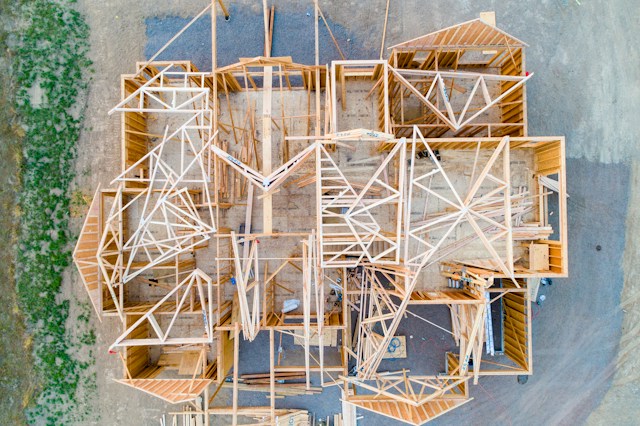What are the benefits of using recycled materials in home construction?

The sustainable evolution of construction has been gradually changing the face of the industry. With the growing concern for environmental conservation, builders and homeowners are moving towards green practices, particularly the use of recycled materials in home construction. This trend is transforming not just the building industry but also promises to significantly influence the future of our planet. So, what exactly are the benefits of using recycled materials in construction? Let’s delve into this topic.
The Impact on the Environment
The construction industry is one of the largest contributors to the generation of waste. However, the practice of recycling and reusing materials can drastically reduce the amount of waste produced. Let’s explore how using recycled materials can mitigate environmental concerns.
Sujet a lire : What are the best small appliances for compact kitchen spaces?
One of the prime ecological benefits of using recycled materials in construction is waste reduction. Traditional building methods can generate enormous waste, which often ends up in landfills, creating numerous environmental problems. Utilizing recycled materials can significantly curtail the levels of construction waste, thus reducing the pressure on landfills.
Moreover, the extraction and processing of raw materials for construction purposes can also have a detrimental effect on the environment, leading to habitat destruction, soil erosion, and pollution. Recycling materials help conserve natural resources by reducing the demand for raw materials.
Dans le meme genre : How to create a home cinema on a budget?
Finally, the energy required to produce new building materials is much higher than that required to recycle existing materials. Energy conservation is another significant advantage of using recycled materials. The energy saved during the recycling process can be used to power other essential services.
Cost Efficiency of Using Recycled Materials
Switching to recycled materials for your construction projects can also have a profound impact on your finances. Let’s examine how using recycled materials can make your home construction business more cost-effective.
Using recycled materials can substantially reduce the costs associated with buying new, raw materials. For instance, recycled concrete can be less expensive than new concrete, and recycled plastic lumber can often be cheaper than virgin wood. Furthermore, there are also savings to be made in waste disposal costs, as using recycled materials generates less waste.
As demand for green building increases, properties constructed with recycled materials can command higher market values. More and more buyers are willing to pay a premium for homes built with environmentally friendly practices. Thus, using recycled materials can increase the resale value of the properties you build.
Enhancing the Durability of Construction
Recycled materials, contrary to common misconceptions, can often outperform traditional materials in terms of durability. Let’s look at how recycled materials can enhance the longevity and resilience of your constructions.
Many recycled materials are incredibly robust and resistant to damage. For instance, recycled steel is just as strong as virgin steel and can be used in the same applications. Moreover, certain recycled materials, such as plastic lumber, resist decay and insects better than traditional wood, thus promising a longer life-span.
Additionally, recycled materials often come with a lower maintenance requirement. For instance, recycled plastic lumber does not need to be painted or stained, saving both time and money on maintenance tasks.
Promoting Sustainable Living
The use of recycled materials in your construction projects does not only benefit you as a builder or homeowner but also promotes sustainable living practices. Let’s delve into how this can be achieved.
Choosing recycled materials for your construction sends a clear message about your commitment to sustainability. This can inspire others in your community to adopt similar practices, creating a ripple effect of environmental consciousness.
Moreover, constructing homes with recycled materials can significantly reduce the carbon footprint of the buildings. This contributes to the mitigation of climate change, one of the most pressing issues our planet is currently facing.
Advancing Innovation in Home Construction
The use of recycled materials is also driving innovation in the construction industry. Let’s explore how this shift towards recycled materials is reshaping home construction practices.
The challenge of incorporating recycled materials into construction has led to the development of innovative building techniques and solutions. For instance, recycled plastic bricks provide a lightweight, waterproof, and durable alternative to traditional bricks.
Similarly, the growing demand for recycled materials has also spurred technological advancement in recycling processes, leading to the production of higher quality recycled products.
In conclusion, the use of recycled materials in home construction offers an array of benefits. It is an environmentally friendly, cost-effective, and innovative solution for builders and homeowners. As the demand for sustainable building practices continues to grow, the role of recycled materials in home construction is set to become even more significant.
Health Benefits of Using Recycled Materials
While the environmental and financial benefits of using recycled materials in construction are significant, one often overlooked aspect is the health benefits that it can offer to builders, homeowners and the wider community. Let’s explore how using recycled materials can contribute to a healthier living environment.
Firstly, many traditional building materials contain potentially harmful chemicals that can off-gas into your home over time. This includes substances like formaldehyde and volatile organic compounds (VOCs), which have been linked to a variety of health problems. Recycled materials, particularly those sourced from sustainable sources, are often free from these harmful substances, leading to better indoor air quality.
Moreover, using recycled materials can reduce the amount of dust and other airborne particles that are often produced during the construction process. This can be particularly beneficial for people with respiratory conditions or allergies.
Finally, the use of recycled materials can contribute to mental wellness by creating a sense of connection to nature and a satisfaction in knowing that one’s home is contributing to environmental sustainability. This psychological benefit of using recycled materials cannot be underestimated, as more people seek to align their lifestyles with their values.
Conclusion
In the face of the environmental challenges of our time, every effort to reduce our carbon footprint counts. Using recycled materials in home construction is one such effort that offers multiple benefits. It not only reduces construction and demolition waste but also saves natural resources and energy. It offers cost-effective solutions to builders and increases property value. It promotes durability and reduces maintenance costs. It contributes to healthier living environments and fosters a sense of environmental responsibility.
Incorporating recycled materials into home construction is not just about building houses; it’s about building a sustainable future. As demand for green building continues to grow, the innovation in the use of recycled materials will reshape the construction industry further. Builders, homeowners, and entire communities stand to benefit from this shift towards more sustainable practices.
The benefits of using recycled materials in home construction extend far beyond the obvious environmental impact. They touch every aspect of our lives, from our finances to our health and the health of our planet. As we strive to create a more sustainable world, the role of recycled materials in home construction remains key and continues to offer exciting possibilities for the future.
